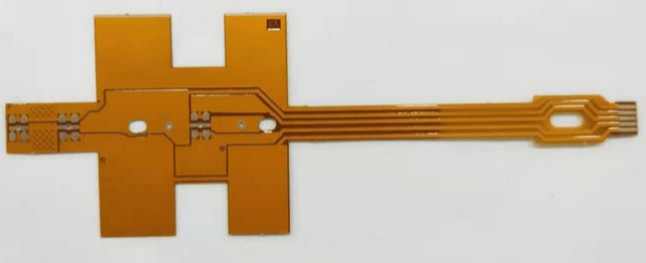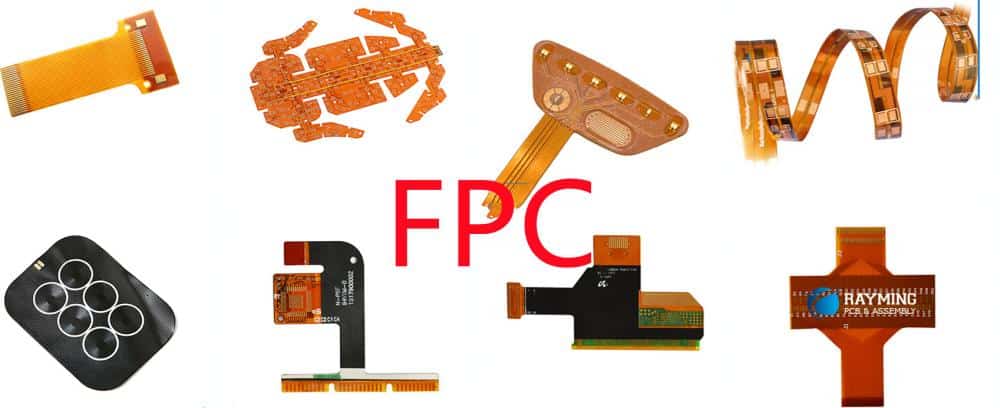Introduction
Printed circuit boards (PCBs) are essential components in virtually all modern electronics. They provide the foundation for mounting and connecting electronic components. A key part of PCB design and manufacturing is determining the right thickness of the copper layer.
The copper thickness is commonly specified in terms of ounces per square foot (oz/ft2). This refers to the weight of the copper foil per unit area. 1 oz/ft2 is equivalent to a thickness of around 1.4 mils or 0.035 mm. This thickness measurement can vary slightly depending on the copper’s purity and manufacturing process.
Understanding copper thickness is important as it impacts cost, current capacity, weight, manufacturability, and other factors. This article provides a detailed look at what 1 oz copper means on a PCB, how it translates to thickness, when it should be used, and more.
What Does 1 oz Copper Mean on a PCB?

The most common copper weights used in PCB design are 1 oz, 2 oz, and 3 oz per square foot. The 1 oz option is the most popular choice for many consumer electronics boards. Here is an overview of what 1 oz copper signifies:
- It indicates the foil has a weight of 1 ounce per square foot.
- The typical thickness of 1 oz copper is around 1.4 mils or 0.035 mm.
- It is thinner and more economical than 2 oz or 3 oz copper.
- It provides moderate current capacity and conductivity.
- It strikes a balance between cost, weight, and electrical/thermal performance.
- It is suitable for many low-medium complexity PCB designs.
- It allows for finer trace widths and spaces vs thicker copper.
The actual thickness of 1 oz copper foil can vary slightly. Some manufactures use a thickness range of 1.2 to 1.5 mils for their 1 oz copper foil products. However, 1.4 mils (or 0.035 mm) is the most commonly used thickness in PCB fabrication.
How Thick is 1 Ounce Copper Exactly?
As mentioned above, the standard thickness for 1 ounce copper foil is generally cited as 1.4 mils or 0.035 mm. This value is based on the density of pure copper.
To be more precise, here is the exact calculation:
- 1 oz/ft2 = 1/16 oz/in2
- Since 1 oz = 437.5 grains:
- 1/16 oz/in2 = 27.34 grains/in2
- For 99% pure copper, density = 0.323 lbs/in3
- Therefore, 27.34 grains/in2 / 0.323 lbs/in3 = 0.08467 mils
So the true thickness of 1 oz pure copper is 0.08467 mils.
Of course, foil used in PCB fabrication is not 100% copper. There are trace impurities and the foil surfaces have micro-roughening treatments. These factors mean the density is not exactly 0.323 lbs/in3.
To account for this, PCB manufacturers use a standardized thickness of 1.4 mils for 1 oz copper rather than the pure copper calculation of 0.08467 mils. The exact thickness can vary slightly between manufacturers.
Thickness Range of 1 Ounce Copper
As mentioned, some variation exists in the thickness of 1 oz copper across different manufacturers. Here are some typical ranges:
- Low end around 1.2 mils
- High end around 1.5 mils
- Most common is 1.4 mils
So in summary, 1 ounce copper on a PCB will be in the ballpark of 1.2 to 1.5 mils thickness. It is generally agreed that 1.4 mils is the standard to use for design and manufacturing purposes when specifying 1 oz copper.
How Does Copper Weight Relate to Thickness?
The relationship between copper weight in oz/ft2 and physical thickness in mils or mm is straightforward:
- Higher copper weight = greater thickness
This assumes the same copper purity and base density. The key factor is that increased weight per unit area requires a thicker foil.
Here is an approximate guideline on copper weights and corresponding thicknesses:
| Copper Weight | Thickness |
|---|---|
| 1 oz | 1.4 mils |
| 2 oz | 2.8 mils |
| 3 oz | 4.2 mils |
| 4 oz | 5.6 mils |
| 5 oz | 7 mils |
So doubling the copper weight from 1 oz to 2 oz approximately doubles the foil thickness. The relationship holds across different copper weights.
Of course, the thickness values are not exactly double since purity and density vary slightly. But in general, thicker copper will have a higher oz/ft2 weight specification. This table gives a rough idea of the correlation.
Copper Thickness Impact on PCB Design and Performance

The selected copper thickness affects a number of aspects in PCB design, manufacturing, and end product performance. Here are some of the considerations when choosing between 1 oz, 2 oz, or other copper weights:
- Current carrying capacity – Thicker copper can handle higher amperage and current density. This is important for power circuits.
- Thermal conductivity – Increased copper thickness improves heat spreading and cooling. This helps dissipate heat from high power components.
- Manufacturability – Thinner foils allow for finer trace widths/spaces and smaller vias. Thicker copper requires larger pad sizes and spacing rules.
- Environmental resistance – Thicker copper makes the PCB more robust against corrosion, cracks, and damage.
- Weight – Lower copper weight reduces the total board weight, which is desirable in mobile devices.
- Cost – Thicker copper foil is more expensive and incurs higher PCB fabrication costs.
In most cases, 1 oz copper offers the best balance between these factors for general circuit boards. It provides adequate current capacity for low-medium power devices, reasonable thermal performance, and economical PCB production.
2 oz copper or greater may be chosen for boards with high power transistors, large current loads, excessive heat generation, or where maximum ruggedness is needed. The trade-off is higher PCB cost along with potential manufacturability impacts.
Typical Applications of 1 Ounce Copper
Here are some examples of common applications suitable for 1 ounce copper PCBs:
Consumer Electronics
- Smartphones, tablets, laptops
- IoT and home automation devices
- Drones, toys, wearables
- Audio/video equipment
- Gaming devices
Automotive Electronics
- Infotainment and GPS modules
- Sensors, controllers, instrumentation
- Lighting electronics
Industrial Controls
- Programmable logic controllers (PLCs)
- Human machine interface (HMI) systems
- Environmental and process monitoring
- Wireless sensors and instrumentation
General Applications
- Microcontroller and development boards (Arduino, Raspberry Pi)
- Power supplies, converters, adapters
- Wireless/radio devices (WiFi, Bluetooth)
- Measurement and testing equipment
For these types of applications, 1 oz copper can reliably handle the current loads and thermal output involved. The moderate foil thickness provides good manufacturability without excessive cost.
Of course, 2 oz, 3 oz, or thicker copper may be warranted for boards with high power dissipation requirements. But 1 oz copper is suitable for many common low-medium complexity circuits.
When is Thicker than 1 Ounce Copper Needed?
While 1 oz copper is suitable for many applications, 2 oz, 3 oz, or greater thickness should be considered when:
- High current loads – If the circuits require > 3-5A continuously, thicker foils help handle the amperage without overheating.
- High component density – Numerous heat-generating components in a small PCB area increases thermal stresses. Thicker copper distributes heat better.
- RF/microwave boards – These boards generate localized heating that thicker copper helps dissipate.
- High voltage – greater than 48V. Thicker insulation layer may be needed.
- High temperature operation – Heat can cause copper tracks to deform and delaminate over time. Thicker foils are more resistant.
- Mission-critical reliability – For aerospace, medical, automotive, and other reliability-critical applications.
- Harsh environments – Thicker copper makes boards more resistant to physical stresses, corrosion, and damage.
So in summary, high power, high frequency, small tightly packed layouts, excessive heat and current, and demanding environments are cases where using more than 1 oz copper would be sensible.
The increased cost and potential manufacturability impacts of thicker copper need to be weighed against the advantages. But for reliability-critical or extreme power/thermal demands, the extra thickness is often warranted.
Key Takeaways
- 1 oz copper means 1 ounce weight per square foot of foil.
- The standard thickness for 1 oz copper is 1.4 mils or 0.035 mm.
- Higher copper weight corresponds to increased foil thickness.
- 1 oz copper offers a good balance between cost, performance, and manufacturability.
- It is suitable for many common low-medium complexity PCBs.
- Thicker than 1 oz may be needed for high power, dense layouts, and demanding environments.
- Understanding copper thickness implications aids in effective PCB design.
Frequently Asked Questions
What are the units used for specifying copper thickness?
There are two common units used:
- Ounces per square foot (oz/ft2) – specifies the weight of the foil.
- Mils or millimeters – indicates the physical thickness.
1 oz/ft2 roughly corresponds to 1.4 mils or 0.035mm thickness.
Is thinner copper cheaper than thick copper?
Yes, thinner copper foil is generally cheaper than thicker foils. 1 oz copper is more economical than 2 oz, for example. The pricing difference can vary across manufacturers and volume. But in general, reducing copper weight lowers cost.
Can thickness fluctuate on different PCB batches?
There can be minor variations in thickness when comparing different batches of boards. Factors like copper purity, surface roughness, and processing conditions affect thickness uniformity. However, for a given supplier, the thickness variance over time is usually under 5%.
Does heavier copper make traces wider?
No, a 1 oz trace has the same width as a 2 oz trace, assuming the same current capacity design. The thickness increases, but not the trace widths. However, minimum spacing between traces may need to increase with thicker copper.
Is it better to use 2 oz vs 1 oz copper?
Not necessarily. 2 oz provides higher current capacity and thermal dissipation. But it also costs more and can negatively impact manufacturability and board weight. 1 oz copper offers the best compromise for most common PCB applications. 2 oz may be preferable for specialized high power boards.
Conclusion
Understanding copper weight specifications like 1 oz and how they relate to physical PCB thickness is an important aspect of electronics design and manufacturing. While 1 oz provides a good balance for many boards, increased copper thickness should be considered for high power dissipation needs. Tracking how copper thickness impacts cost, weight, current capacity, and manufacturability leads to optimized PCB designs.






Leave a Reply